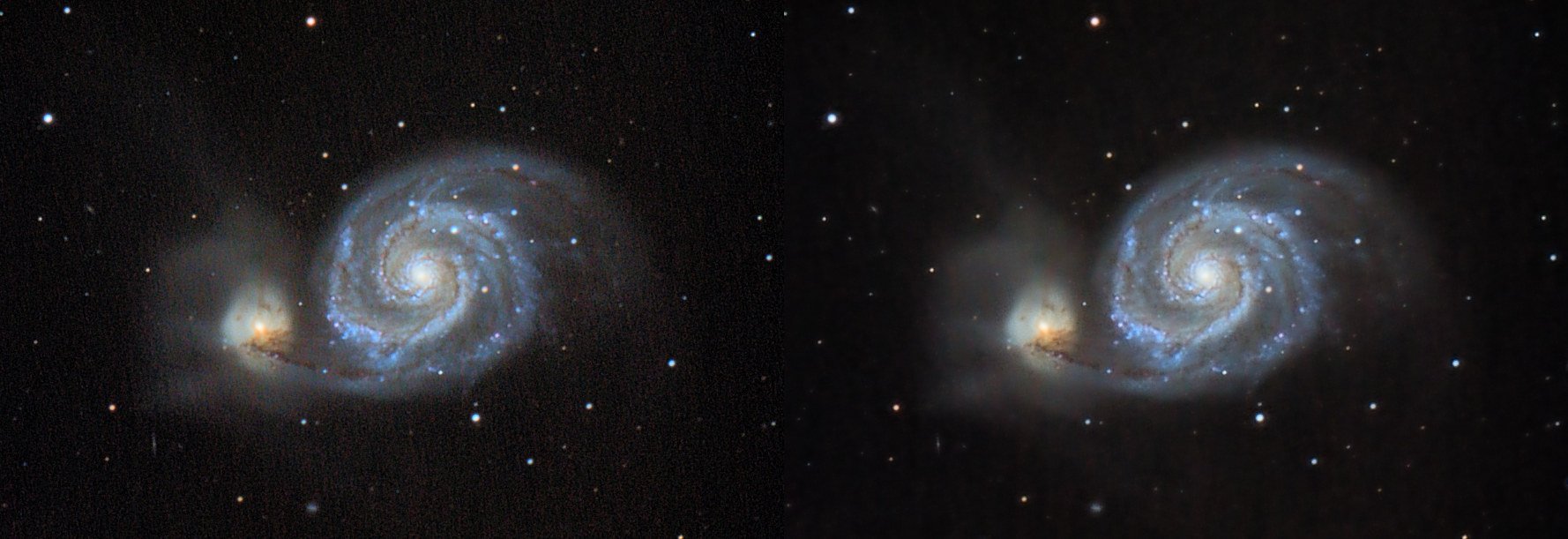- Usage
- Setup
Setup

The first stage of noise reduction involves helping StarTools establish a baseline for visual noise grain and the presence (and direction) of walking noise. To establish this baseline, increase the 'Grain size' parameter until no noise grain of any size can be seen any longer. StarTools will use this baseline as a guide as to what range of details in your image is affected by visible noise.
If walking noise is present, then temporarily set 'Grain Size' parameter to 1.0. Next, use the 'Walking Noise Angle' level setter, or click & drag an imaginary line on the image in the direction of the walking noise to set the 'Walking Noise Angle' that way. Now increase the 'Walking Noise Size' parameter until individual streaks are no longer visible in the direction you detected them in (though other imperfections may still be visible). After that, increase the 'Grain Size' parameter until other noise grain can no longer be seen.
After clicking 'Next', analysis and wavelet scale extraction starts, upon which, after a short while, the second interactive noise reduction stage interface is presented.
You may also be interested in...
- Traditional image processing software for astrophotography is fundamentally broken (under Tracking is signal preservation)
Current image processing routines and filters are still as 'dumb' as they were in the early 90s.
- TL;DR (under Tracking is signal preservation)
In StarTools, your signal is processed (read and written) in a time-fluid way, by means of an ever changing equation for every pixel.
- Unified De-Noise: Detail Aware Wavelet-based Noise Reduction and Noise Grain Shaper (under Features & Documentation)
The Unified De-Noise module offers temporal, astro-specific noise reduction.
- Usage (under Denoise)
- Tracking (under Introduction)
Tracking how you process your data also allows the noise reduction routines in StarTools to achieve superior results.
